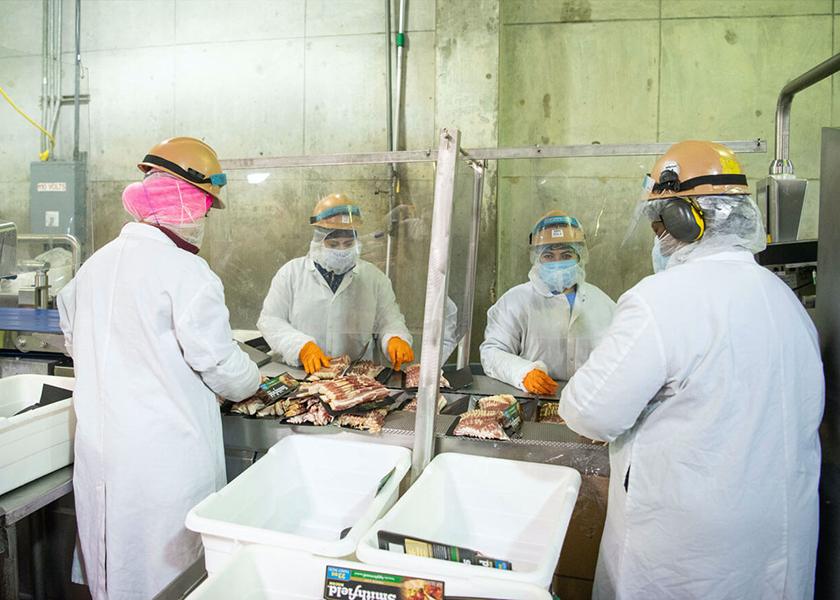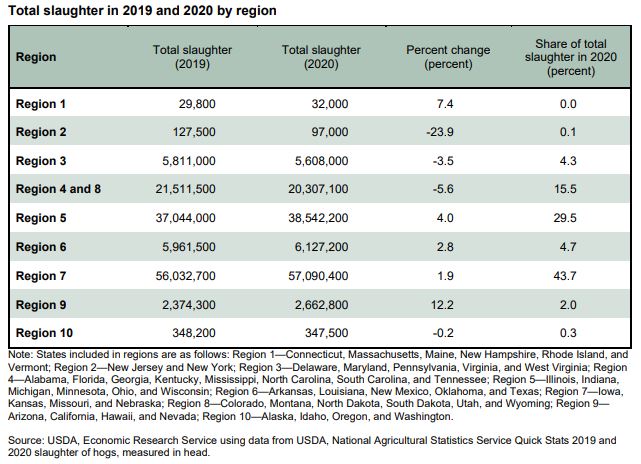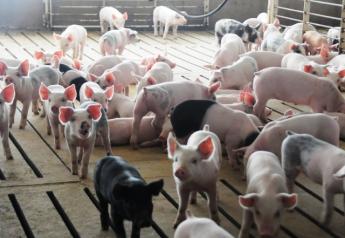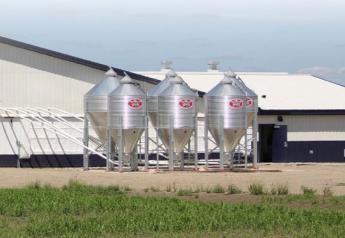USDA Study Confirms Resiliency of Pork Processors During COVID-19

Although the COVID-19 pandemic affected hog slaughter volume in every region of the U.S., a new study by USDA’s Economic Research Service says the magnitude of the change in slaughter and the trajectory of recovery differed.
Some regions experienced a prolonged decline in hog slaughter compared with 2019, while sharp declines in other regions only lasted a few weeks. The report noted the greatest percentage decrease in slaughter occurred in the region that comprises New York and New Jersey, which extended well beyond the start of the pandemic. Meanwhile, slaughter counts in the major pork-producing region that comprises Illinois, Indiana, Michigan, Minnesota, Ohio and Wisconsin, declined for three weeks at the end of April and early May, but was generally above 2019 counts for the remainder of 2020.
The region with the largest hog production, which is comprised of Iowa, Kansas, Missouri and Nebraska—had measurable declines in output in April and May, but output rebounded to 2019 levels by June, USDA reports.
A 14% increase in slaughter occurred in the region with Arizona, California, Hawaii and Nevada in 2020 compared to 2019. This region does not account for a large share of hog processing, but the large percentage increase in slaughter suggests the pandemic helped boost processing in this region, USDA noted.
“Regions with large pork processing plants recovered in a couple of months and slaughter rates steadily increased. Other regions with smaller plants did not recover faster than major processing regions, revealing that plant size might not be the only characteristic influencing resiliency,” USDA said in the report.
The study drew upon two main sources of data to study changes in regional hog slaughter rates in 2020, including weekly and monthly regional slaughter volumes reported by USDA, National Agricultural Statistics Service and data on daily COVID-19 cases from the Centers for Disease Control and Prevention. Slaughter data originated from USDA’s Food Safety and Inspection Service and weekly slaughter reports from USDA’s Agricultural Marketing Service. The study also used a listing of the major pork processing facilities developed by economist Steve Meyer in 2020 to further discuss changes in slaughter given the location and size of processing facilities in each region.
More from Farm Journal's PORK:
USDA Revises Federal Order Suspending Interstate Movement of Swine Products
APHIS Awards $16.3 Million in Farm Bill Funding to Protect Animal Health









